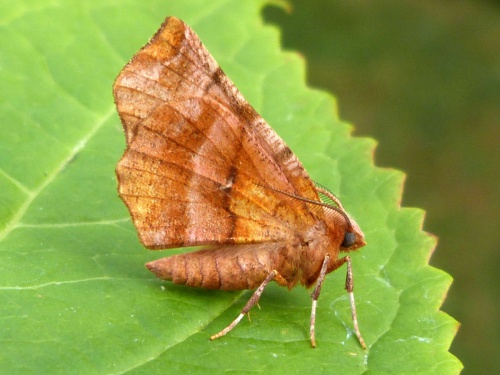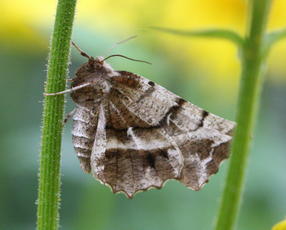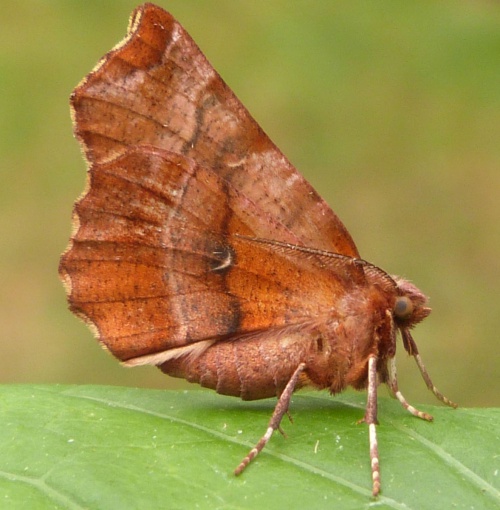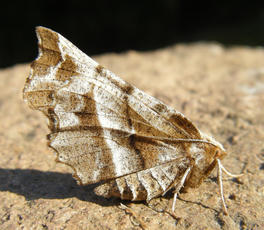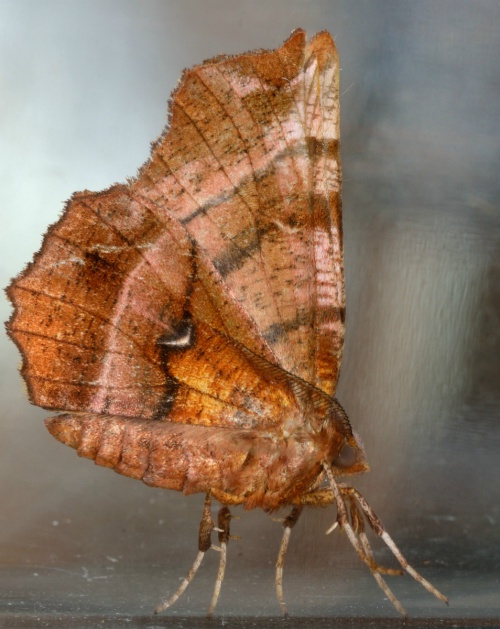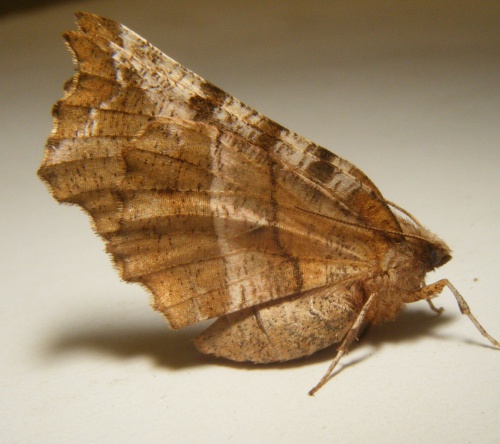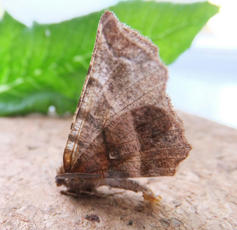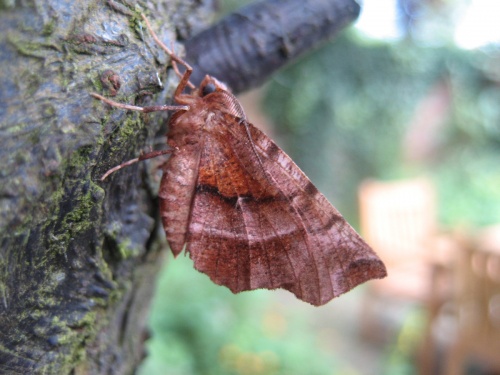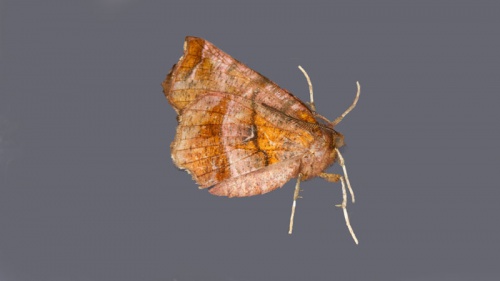Early Thorn - Selenia dentaria
Wingspan 28-40 mm. The moths in the summer brood are normally paler. Melanic forms occur fairly regularly in parts of northern England. Resting position also distinguishes Early Thorn from all other British Thorns. It holds its wings up over its back and pressed together like a butterfly.
Occurring in a wide range of habitats.
There are two distinct generations (except in the far north), the first of which flies in April and May. The summer brood, which appears in August and September, usually produces smaller and paler moths.
The larvae feed on a variety of deciduous trees.
Commonly distributed throughout Britain, though less so in Scotland. In a recent survey to determine the status of all macro moths in Britain this species was classified as common.
Fairly common in Leicestershire and Rutland. L&R Moth Group status = A (common and resident)
Leicestershire & Rutland Map
Enter a town or village to see local records
MAP KEY:
Yellow squares = NBN records (all known data)
Coloured circles = NatureSpot records: 2020+ | 2015-2019 | pre-2015
UK Map
Species profile
- Common names
- Early Thorn
- Species group:
- Moths
- Kingdom:
- Animalia
- Order:
- Lepidoptera
- Family:
- Geometridae
- Records on NatureSpot:
- 387
- First record:
- 18/07/1950 (Wesley, Isaac)
- Last record:
- 13/04/2024 (Poole, Adam)
Total records by month
% of records within its species group
10km squares with records
The latest images and records displayed below include those awaiting verification checks so we cannot guarantee that every identification is correct. Once accepted, the record displays a green tick.
In the Latest Records section, click on the header to sort A-Z, and again to sort Z-A. Use the header boxes to filter the list.


